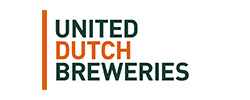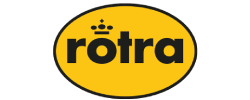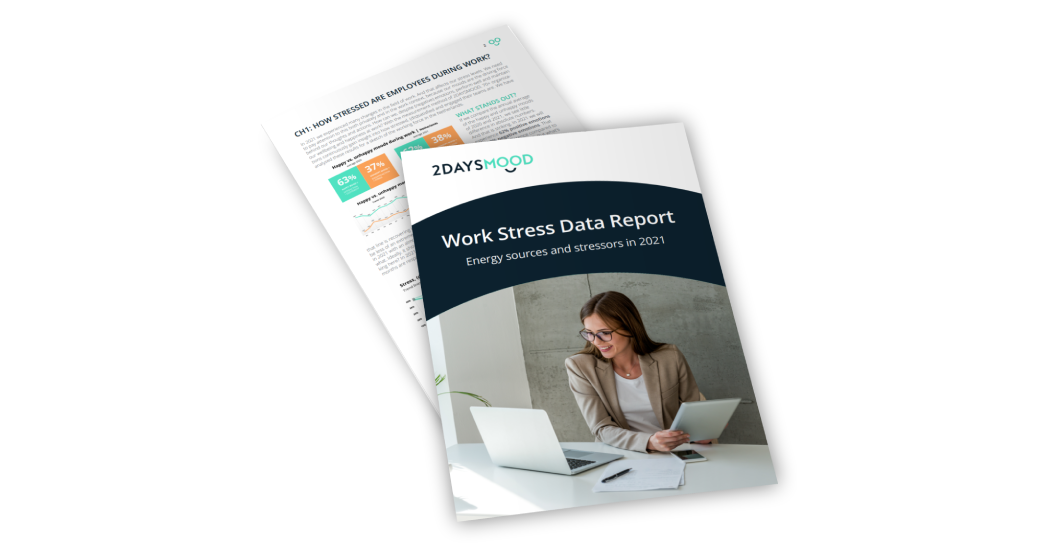Work stress figures in the Netherlands: more extreme peaks during the Covid-crisis

By 2DAYSMOODIES | 26/11/2020
PRESS RELEASE
While it is the national Week of Work Stress 2020 in the Netherlands, the second wave of Covid makes its impact. And according to our data, that means work stress and dissatisfaction are increasing among employees and managers. We see this in the weekly survey results of more than 50 Dutch organizations and 3,500 professionals. The more extreme peaks are caused by stressors such as workload and a disturbed work-life balance. But the data also show our energy sources, such as relationships with colleagues, which is the top energizer during work in 2019 and 2020!
All figures, trends and recommendations are highlighted in the 2DAYSMOOD Work Stress data report. You can download it here. The article below summarizes the most important insights and lessons from the data report.
Insights from the Work Stress data report
“Earlier this year, we saw a significant peak in negative emotions amongst workers. After the Covid-outbreak, organizations had to switch quickly to survive and connect employees remotely. That worked out nicely. But now that we have been in this crisis for a long time, the stretch of compulsory working from home is gone for many workers. Togetherness and resilience are declining and the workload only seems to increase. Positive energy of employees therefore changes into negative energy: work stress. We even get into the danger zone when it comes to burnouts. So it is about time that we supplement our energy sources and convert work stress back into happiness at work with the help of these valuable insights!” Said Martin Meulenkamp, CEO and HR expert at 2DAYSMOOD.
1. Rising stress and dissatisfaction are putting us off balance
Compared to 2019, the overall picture of workers’ moods in 2020 consists of peaks of work stress and dissatisfaction, and decreasing excitement during work.
We see that the positive energy in particular becomes negative. In three months (Aug-Oct) stress increases by 7% and excitement decreases by 6%. Dissatisfaction also increases by 7% in 2020, approaching a 50/50 ratio of positive and negative moods. Ideally, that would be 75% positive and 25% negative, and teams function best in that balance.
2. Managers show more resilience than employees
The happiness at work of both managers and employees decreases in the second wave of Covid within a month and a half by about 10%. What is striking after this decline is that managers bounce back to their normal level of employee happiness faster and more forcefully (73%). Employees, on the other hand, remain stuck at 57%. You can see a picture of the trends and explanation for this major difference in the report.
3. The greatest stressors and energy sources in 2020
How satisfied are employees with the factors in their working environment and how important do they find them to their employee happiness? By comparing the scores on these questions (a match or mismatch) energy sources and stressors come to light. For example, “work-life balance” is the number one stressor in 2020. Employees find this theme very important for their happiness at work, with a score of 4.4 on a scale of 5. However, they are less satisfied with it, a score of 3.6. This theme causes stress because it does not live up to expectations. The stressors in places 2 and 3 are “receiving appreciation” and “internal communication”. The top 3 energy sources in 2020 are in the report.
4. Workload as a reason for negative and positive moods during work
If employees experience negative emotions during work, they indicate in 26% of the cases that the cause has to do with workload. If they feel stressed (specific emotions: frustrated and tense), work pressure takes an even greater share at 31%. It is striking in the data that if employees have a positive mood, the reason also falls into the category of workload in 17% of the cases. Happy because of workload? No, this appears to be related to progress! Eliminating a high workload by properly following schedules, achieving goals and meeting deadlines.
5. Health check for employers: the eNPS is decreasing again
The employee Net Promoter Score (eNPS) helps to gauge how good the employership of an organization is. This shows how many employee promoters or detractors (‘critics’) an organization has. Promoters would recommend their employer to others, detractors feel their employer is failing.
During the first Covid-peak, the number of detractors in Dutch organizations decreased by 9%, while 8% promoters were added. This appreciation of employees can be explained by the extra attention they received from their employer. During the second wave of the pandemic, we instead see an increase in detractors (7%). What is the cause of this and how can employers improve?
Read the Work stress data report for more information, advice from employee happiness experts and a checklist for employees to handle workload in a proactive way.
“Enthusiasm is declining this year and that is worrying. Because if the ingredients for enthusiasm and employee happiness are missing, a burnout is lurking. And that is a risk for the employability of your employees. It is understandable that enthusiasm is not already back to the level it was before the Covid-crisis. But that means that right now, around the second wave, attention must be paid to it.” – Nancy Peeters, initiator of Network Employee Happiness (Netwerk Werkgeluk)
Blogs & Whitepapers
We believe knowledge should be shared!
Prefer to talk to an expert? Then request a free consultation about your specific issue.











Happy employees make happy customers
These (HR) managers use 2DAYSMOOD and make real impact!
How? Our measuring method is the renewed employee survey, because it’s faster, easier and science based. A continuous source of data with which you can improve your (team) culture step-by-step and increase employee happiness. In short, that is profitable for your organization!

Jan-Herman Hanskamp

Emma Sluman

Rita Blankenberg

Robin Gerritsen
Leading Organizations Work with 2DAYSMOOD













Get in touch for free advice, a demo or quick scan!
Always the employee survey that suits you.
Do you want to increase happiness in your teams? Collect feedback on a specific subject? Monitor stress in real-time? Or do you need a baseline survey to get insight in the drivers of your culture?
We are happy to help with your specific challenge, using:
- Our expertise, experience and energy!
- A demo of our tool (if you like)
- The opportunity to try it for free
- Or enjoy reading our brochure







